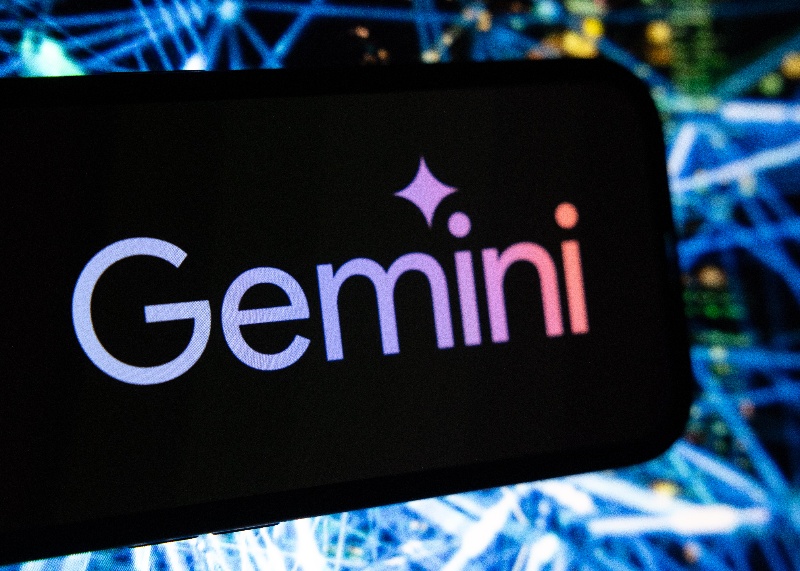1. Introduction: The GPU Bottleneck in AI Development
The race to build and deploy powerful AI models feels like a modern-day gold rush. At the heart of this revolution lies the ability to fine-tune massive models like Google’s Gemini. These models promise incredible capabilities, from generating human-quality text to solving complex problems. But unlocking this potential comes with a massive computational price tag. As model sizes explode, the demand for GPU power – the engines driving AI training – has skyrocketed. This surge creates a significant bottleneck: sky-high cloud costs, frustratingly idle GPU resources sitting unused, and the sheer complexity of managing multi-GPU clusters. Teams find themselves drowning in infrastructure headaches instead of focusing on innovation. Budgets balloon, deployments stall, and valuable engineering time vanishes into the black hole of cluster management. This is where purpose-built solutions like WhaleFlux – an intelligent GPU resource orchestrator for AI enterprises – become critical. WhaleFlux tackles the GPU efficiency crisis head-on, letting you focus on building transformative AI, not babysitting hardware.
2. The Hidden Costs of Fine-Tuning Gemini
Fine-tuning a behemoth like Gemini isn’t just computationally expensive; it’s a resource-intensive marathon filled with hidden costs that quickly derail projects and budgets. Let’s break it down:
Sheer Compute Intensity:
Gemini fine-tuning involves massive datasets, countless hyperparameter tuning experiments, and multiple iteration cycles. Each cycle demands sustained, high-performance computing power, primarily from expensive GPUs. This isn’t a quick job; it can run for days or even weeks.
Fragmented GPU Utilization:
In traditional setups, GPUs are often assigned statically to jobs. Fine-tuning workflows, however, have phases with wildly different GPU demands (e.g., heavy computation during training peaks vs. lower needs during validation or checkpointing). Static allocation leads to significant periods where powerful (and costly) GPUs sit idle while other jobs wait in queues – pure waste.
The Over-Provisioning Trap:
Fearing job failures or slow queues, teams often request more GPUs than strictly necessary “just to be safe.” This over-provisioning guarantees you’re paying for resources you aren’t fully utilizing, inflating costs dramatically. Cloud providers love this; your budget does not.
Instability During Long Runs:
Week-long training jobs are vulnerable. Hardware glitches, network hiccups, or software errors can crash the entire process hours or days in. Restarting means lost time, wasted compute cycles already paid for, and frustrating delays.
The Domino Effect:
The result? Blown budgets as cloud bills spiral out of control. Delayed deployments as teams wait for resources or troubleshoot failures. Wasted engineering time – your most valuable asset – spent managing infrastructure instead of improving models. These hidden costs can easily double or triple the apparent price tag of fine-tuning Gemini.
3. WhaleFlux: Intelligent GPU Orchestration for AI Workloads
WhaleFlux tackles these inefficiencies head-on by optimizing multi-GPU clusters for maximum throughput and minimal waste. Think of it as an intelligent air traffic control system, but for your valuable GPU fleet. It dynamically directs computational power precisely where and when it’s needed most within your cluster.
Here’s how WhaleFlux transforms your GPU infrastructure:
Dynamic Resource Allocation:
WhaleFlux doesn’t lock GPUs to jobs statically. It intelligently provisions resources based on the real-time needs of your Gemini fine-tuning pipeline. Need peak power during a critical training phase? WhaleFlux allocates it. In a lighter validation stage? Resources are intelligently scaled back or offered to other queued jobs. This eliminates idle time and ensures maximum utilization.
Predictive Load Balancing:
WhaleFlux goes beyond simple scheduling. It leverages predictive algorithms to understand the demands of different fine-tuning jobs and optimally distribute them across your available NVIDIA GPUs – whether you have powerful H100s or H200s for the heaviest lifting, versatile A100s, or cost-effective RTX 4090s. This ensures no single GPU is overwhelmed while others sit idle, smoothing out bottlenecks and speeding up overall job completion.
Cluster Health Monitoring & Auto-Recovery:
WhaleFlux constantly monitors the health of your GPU cluster. If a node fails or a GPU encounters an error during that crucial 5-day Gemini training run, WhaleFlux automatically detects the issue, safely checkpoints the job, and restarts it on healthy hardware – minimizing downtime and preventing costly lost progress. Resilience is built-in.
Hardware Flexibility: WhaleFlux works seamlessly with the industry-leading NVIDIA GPUs essential for demanding AI workloads. Whether you purchase or lease dedicated H100s, H200s, A100s, or RTX 4090s, WhaleFlux unifies them into a resilient, high-performance pool. You choose the hardware strategy that fits your budget and long-term plans; WhaleFlux ensures you get the absolute most out of every GPU, regardless of how you acquired it.
4. Gemini Fine-Tuning Accelerated with WhaleFlux
Imagine running your Gemini fine-tuning pipeline on a WhaleFlux-managed GPU cluster. The difference isn’t subtle; it’s transformative:
Faster Iteration Cycles:
Dynamic allocation and intelligent scheduling drastically reduce job queue times. Your data scientists aren’t waiting hours or days for resources to free up. They can launch experiments faster, test more hypotheses, and iterate on the Gemini model rapidly. This acceleration directly translates to faster time-to-market for your AI-powered features.
Near-100% GPU Utilization:
WhaleFlux squeezes the waste out of your cluster. Idle GPUs become a thing of the past. By ensuring resources are actively working whenever possible, you dramatically increase the effective output of your existing hardware investment. You’re paying for power; WhaleFlux ensures you use that power.
Enhanced Stability for Marathon Jobs:
The auto-recovery capabilities provide peace of mind. Long-running Gemini fine-tuning jobs that previously kept engineers awake at night worrying about crashes can now proceed with confidence. WhaleFlux acts as a vigilant guardian, ensuring continuity and protecting your valuable compute time.
Significant Cost Savings:
The combined effect of eliminating idle time, preventing over-provisioning, reducing failed-job waste, and speeding up iteration cycles adds up to massive savings. AI enterprises using WhaleFlux consistently report reductions of 30-60% in their cloud GPU expenditure for workloads like Gemini fine-tuning. This isn’t just trimming the edges; it’s fundamentally altering the cost structure of deploying cutting-edge AI.
5. Why Infrastructure Matters: Beyond Just Hardware
In the high-stakes world of large language models like Gemini, simply having access to H100s or A100s isn’t enough. The management layer – how you orchestrate and utilize that raw horsepower – is the true differentiator. WhaleFlux isn’t just about access to GPUs; it’s about squeezing maximum value from every FLOP (floating-point operation).
Strategic Advantage:
Efficient infrastructure directly enables faster innovation. Teams unburdened by manual cluster management and resource scarcity can focus their energy on model architecture, data quality, and application development – the areas that truly create competitive advantage.
Manual vs. Automated: Compare the realities:
- Manual Management: Engineers spend significant time configuring clusters, monitoring jobs, handling failures, and manually optimizing resource allocation. Utilization is often suboptimal (50-70%). Costs are high and unpredictable.
- WhaleFlux Automation: Infrastructure becomes a self-optimizing utility. Engineers focus on AI development. Utilization consistently hits 90%+. Costs are significantly lower and more predictable. Resource allocation is dynamic and optimal.
Built for Enterprise AI:
WhaleFlux is designed for the scale and complexity of modern AI deployments. It provides robust security features to protect sensitive model data and training processes. Its architecture scales seamlessly as your GPU cluster grows from dozens to hundreds of accelerators. It handles the intricacies of scheduling complex, interdependent LLM training and fine-tuning jobs efficiently.
6. Getting Started with WhaleFlux
Ready to slash your Gemini fine-tuning costs and boost your team’s productivity? Integrating WhaleFlux into your workflow is straightforward:
Flexible Deployment:
WhaleFlux adapts to your environment. Deploy it on-premises to manage your own data center GPUs, in a hybrid model combining on-prem and cloud resources, or leverage dedicated cloud environments optimized by WhaleFlux.
Flexible GPU Acquisition:
Choose to purchase or lease your preferred NVIDIA GPUs (H100, H200, A100, or RTX 4090) – WhaleFlux optimizes them all. We offer flexible leasing terms to suit different project needs and budgets. (Important Note: WhaleFlux focuses on providing dedicated resources for sustained AI workloads. We do not offer per-second or hourly billing. Our leasing options start with a minimum commitment of one month, ensuring stability and cost-effectiveness for serious AI development and fine-tuning tasks like Gemini.)
See the Difference:
- Book a Demo: Witness firsthand how WhaleFlux can optimize your specific Gemini fine-tuning workload. Our experts will benchmark potential savings and performance gains for you.
- Download our Whitepaper: Dive deeper into the economics. Get our comprehensive guide: ‘Calculating ROI for GPU Resource Managers’, packed with data and methodologies to quantify the potential savings for your enterprise.
7. Conclusion: Future-Proof Your AI Stack
The journey to harness the power of models like Gemini is paved with computational challenges. Skyrocketing GPU costs, frustrating inefficiencies, and infrastructure instability are major roadblocks. But they don’t have to be. Effective GPU resource management is no longer a luxury; it’s a strategic necessity for any AI enterprise serious about scaling and innovation.
The equation is clear: Efficiency = Faster Training + Lower Costs + Reliable Scaling. WhaleFlux delivers this efficiency by transforming your GPU cluster from a static, costly resource into a dynamic, optimized powerhouse. It eliminates waste, accelerates iteration, and provides the stability needed for mission-critical fine-tuning jobs.
Don’t let GPU complexity throttle your AI ambitions. Let WhaleFlux handle the infrastructure burden so your talented team can focus entirely on what they do best: building transformative AI with Gemini. Stop pouring money into idle resources and start maximizing the value of every GPU cycle. The future of efficient AI development starts with intelligent orchestration. Start your journey with WhaleFlux today.

